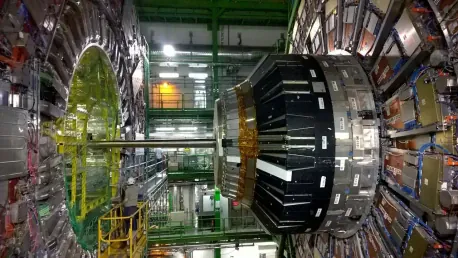The year 2024 has been a landmark period for advancements in quantum technology and post-quantum cryptography (PQC). With quantum threats becoming more imminent, various sectors, including Congress, Federal agencies, and industry, have taken significant steps toward achieving quantum readiness. These efforts underscore the increasing urgency and gravity of fortifying our cyberspace against potential quantum-based threats while also leveraging quantum capabilities across a range of applications.
Among the notable achievements is the development of quantum-resistant encryption algorithms by the National Institute of Standards and Technology (NIST), addressing potential cyberattacks from quantum computers. Parallelly, the Department of Defense (DoD) has been at the forefront of integrating quantum technologies, particularly focusing on quantum sensing and error reduction. Federal agencies are also exploring practical quantum use cases, moving from theoretical research to real-world applications such as improving transportation efficiency and establishing a quantum-enabled space economy. Alongside these technical strides, legislative actions have supported quantum research and development, demonstrating a unified governmental push towards quantum readiness and leadership.
Cybersecurity Advances
In the dynamic field of cybersecurity, 2024 marked significant progress in developing defenses against quantum threats. NIST’s unveiling of three quantum-resistant encryption algorithms – CRYSTALS-Kyber, CRYSTALS-Dilithium, and Sphincs+ – stands as a pivotal achievement. These algorithms are meticulously engineered to withstand cyberattacks from quantum computers, signaling a new era in safeguarding sensitive information. NIST’s commitment extends further as it plans to release a total of 15 PQC algorithms, with the much-anticipated FALCON algorithm set to be announced soon. This iterative approach in releasing PQC standards exemplifies a careful and methodical advancement in cryptographic defenses.
Bill Newhouse from NIST’s National Cybersecurity Center of Excellence (NCCOE) revealed that 14 PQC signatures have been selected from 40 offers, with preparations underway for public release. November saw the publication of a draft report by NIST, outlining its strategic plan to lead the transition to PQC standards. Complementing these efforts, the Cybersecurity and Infrastructure Security Agency (CISA) raised alarms about adversaries stockpiling encrypted data to decrypt it later using quantum technology. This revelation underscores the critical need for adopting a zero trust architecture, a defensive strategy that minimizes access privileges to data, thereby enhancing overall system security.
Department of Defense (DoD) Initiatives
The defense sector’s engagement with quantum technology has been robust and forward-looking, as evidenced by several pivotal initiatives in 2024. The National Defense Authorization Act (NDAA) for the year includes specific provisions aimed at bolstering funding and collaboration within the Quantum Benchmarking program of the Defense Advanced Research Projects Agency (DARPA). This program seeks to expedite the deployment of essential quantum capabilities critical for DoD missions, reflecting an earnest commitment to staying ahead in the quantum race. Moreover, the DoD has been tasked with formulating a new strategic plan focusing on quantum information sciences and technologies.
The launch of the Defense Innovation Unit’s (DIU) Emerging Technology Portfolio further underscores the defense sector’s proactive stance on quantum integration. This initiative aims at incorporating quantum sensing technology drawn from both commercial and non-traditional ecosystems. Congressional interest in these advancements has been palpable, with senators pressing the Pentagon for further details on its quantum sensing efforts. Complementing these endeavors, the Intelligence Advanced Research Projects Activity (IARPA) rolled out the Entangled Logical Qubits program, targeting error reduction in quantum research – an essential step for advancing quantum technology.
Quantum Use Cases in Federal Agencies
Beyond the walls of research labs, Federal agencies are venturing into quantum technology applications that promise tangible benefits across various sectors. A notable initiative by the Department of Energy (DoE), in collaboration with NASA and the DoD, aims to establish a “quantum-enabled space economy for the revitalization of Earth.” This project marks a significant leap from theoretical exploration to practical application, showcasing quantum technology’s potential to drive innovation and sustainability.
Transportation, an essential sector of modern infrastructure, is also poised for transformation through quantum technologies. The Department of Transportation has identified 18 priority areas where such technologies could enhance efficiency, safety, and cybersecurity, and improve routing and fuel efficiency. The agency’s outlined timeline and roadmap for implementing these technologies over the next three years reflect a strategic and forward-thinking approach to integrating quantum capabilities into key industry operations. These efforts signify a broader acceptance and utilization of quantum technologies beyond academic and theoretical confines, paving the way for revolutionary advancements in Federal operations.
Congressional Actions and Legislation
Congressional actions have demonstrated an increased recognition of the critical role of quantum technology in maintaining national security and technological leadership. This acknowledgment is evident in the introduction of significant legislative measures aimed at supporting quantum research and development. The National Quantum Initiative Reauthorization Act, seeking to authorize nearly $3 billion for quantum research at NIST, NSF, and NASA, is a testament to this commitment. This legislation serves as an extension of the National Quantum Initiative passed in 2018, ensuring sustained momentum in quantum advancements.
Other legislative efforts include the AI and Critical Technology Workforce Framework Act, spearheaded by Sen. Gary Peters, which addresses the growing cyber workforce shortfall by directing NIST to create a workforce framework focusing on AI and quantum technologies. Additionally, the NSF AI Education Act of 2024, introduced by Sens. Jerry Moran and Maria Cantwell, aims to provide scholarships for students pursuing higher education in AI and related fields. The Defense Quantum Acceleration Act and the Expanding Partnerships for Innovation and Competitiveness Act, introduced by Rep. Elise Stefanik and Reps. Haley Stevens and Jay Obernolte respectively, further illustrate a bipartisan commitment to fostering quantum innovation and competitiveness.
Quantum Leadership and Future Outlook
As the landscape of quantum technology evolves, the necessity for dedicated leadership in this domain becomes increasingly apparent. The transition of administrations has seen a renewed focus on appointing specialized roles akin to the AI and Crypto Czar, highlighting the strategic importance of quantum oversight. The Government Accountability Office (GAO) emphasized the need for a singular entity to oversee the Federal shift to PQC, suggesting that the Office of the National Cyber Director (ONCD) take the lead in implementing a coherent national strategy. This proposed centralized leadership would facilitate coordinated efforts across various sectors, ensuring effective implementation and progress monitoring.
The collective endeavor across different government sectors underscores the critical importance of preparing for quantum threats and harnessing quantum capabilities responsibly. The significant achievements in 2024, spanning cybersecurity advancements, defense initiatives, and real-world quantum applications, indicate a concerted effort to build a resilient and quantum-capable future. Looking ahead, coordinated leadership and sustained legislative support will be vital in maintaining the trajectory and addressing emerging challenges as the nation progresses toward 2025 and beyond. The strides made thus far highlight a profound understanding of the potential and risks associated with quantum technology, setting the stage for continued innovation and strategic preparedness.









